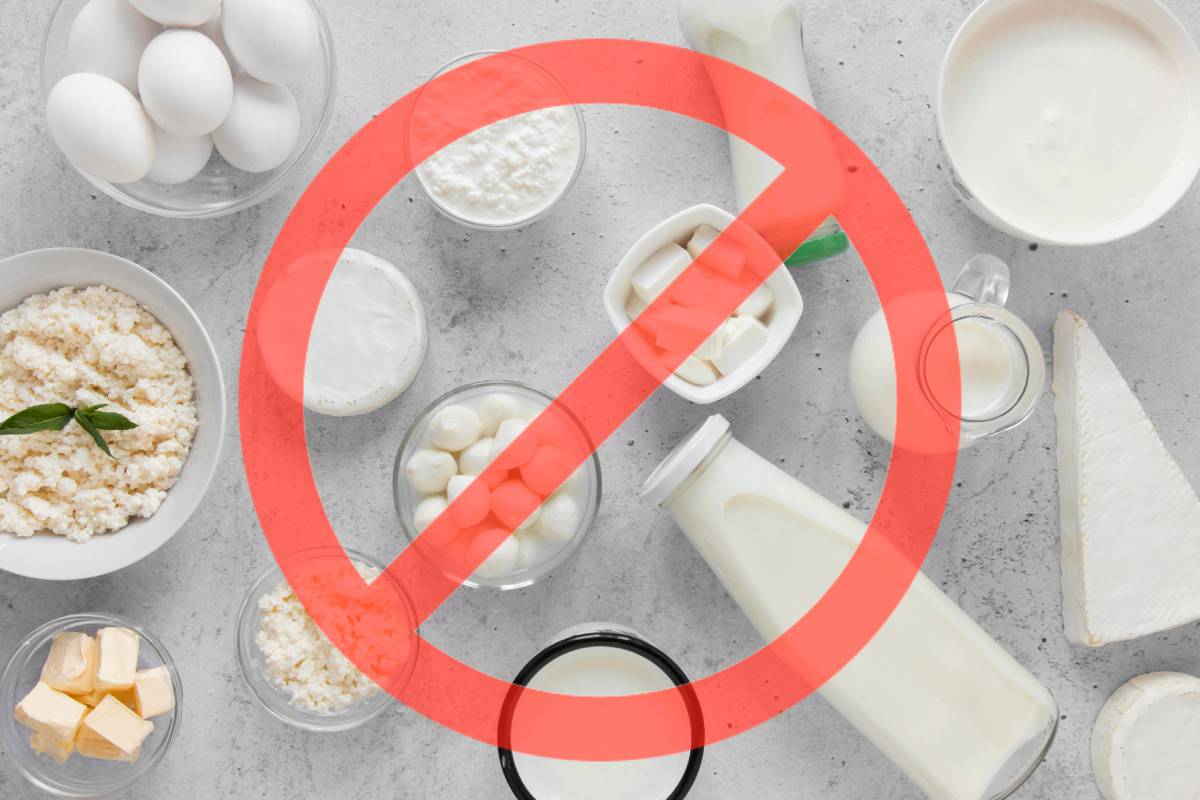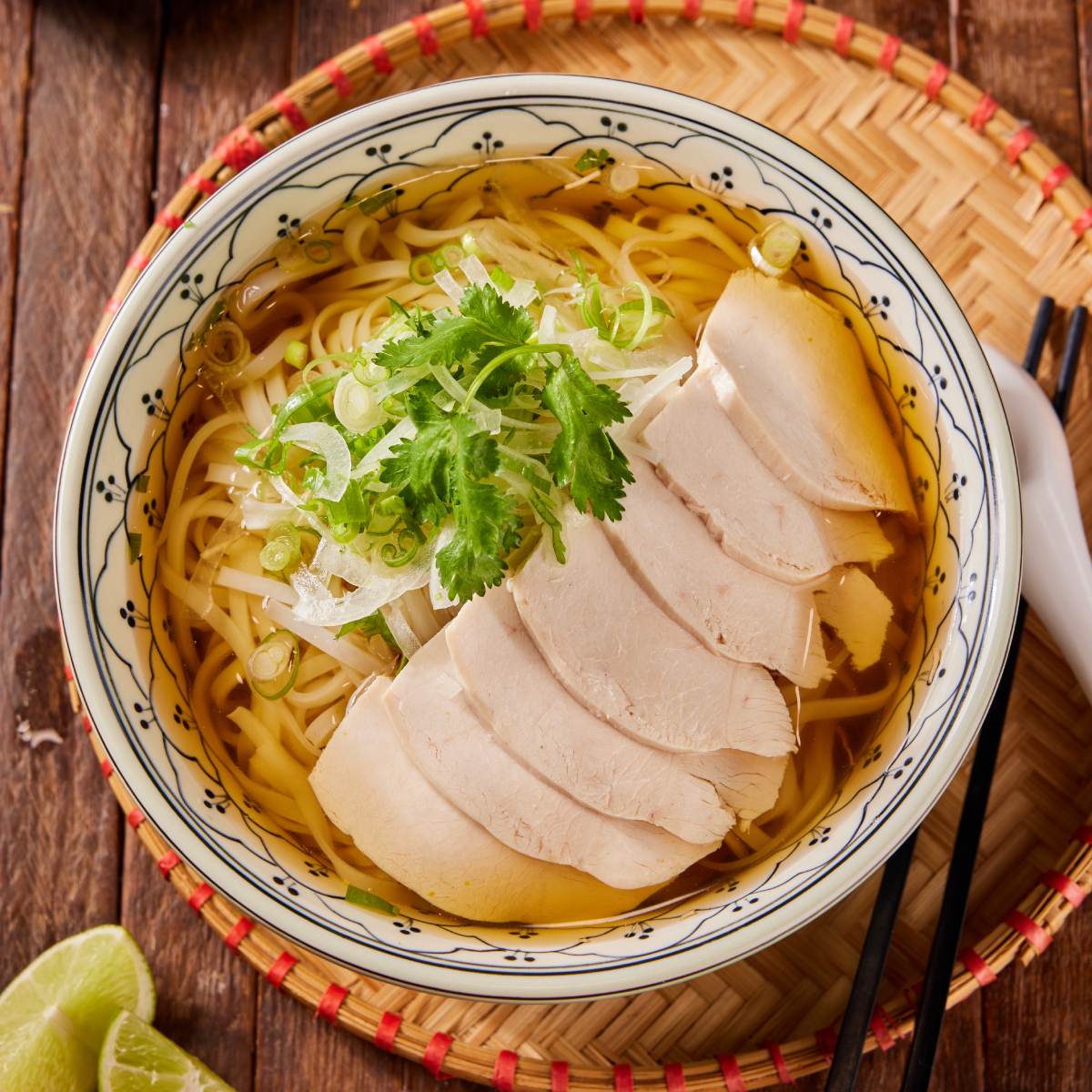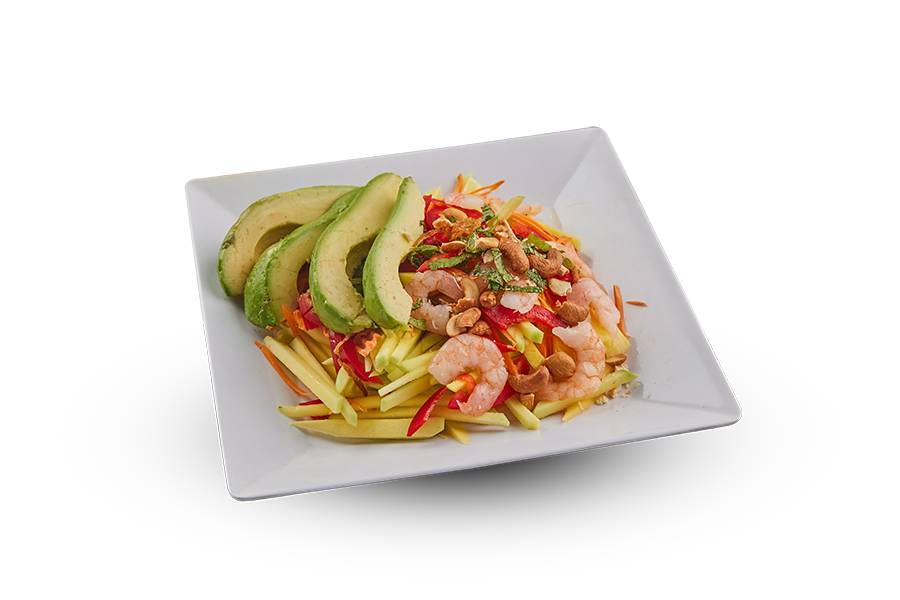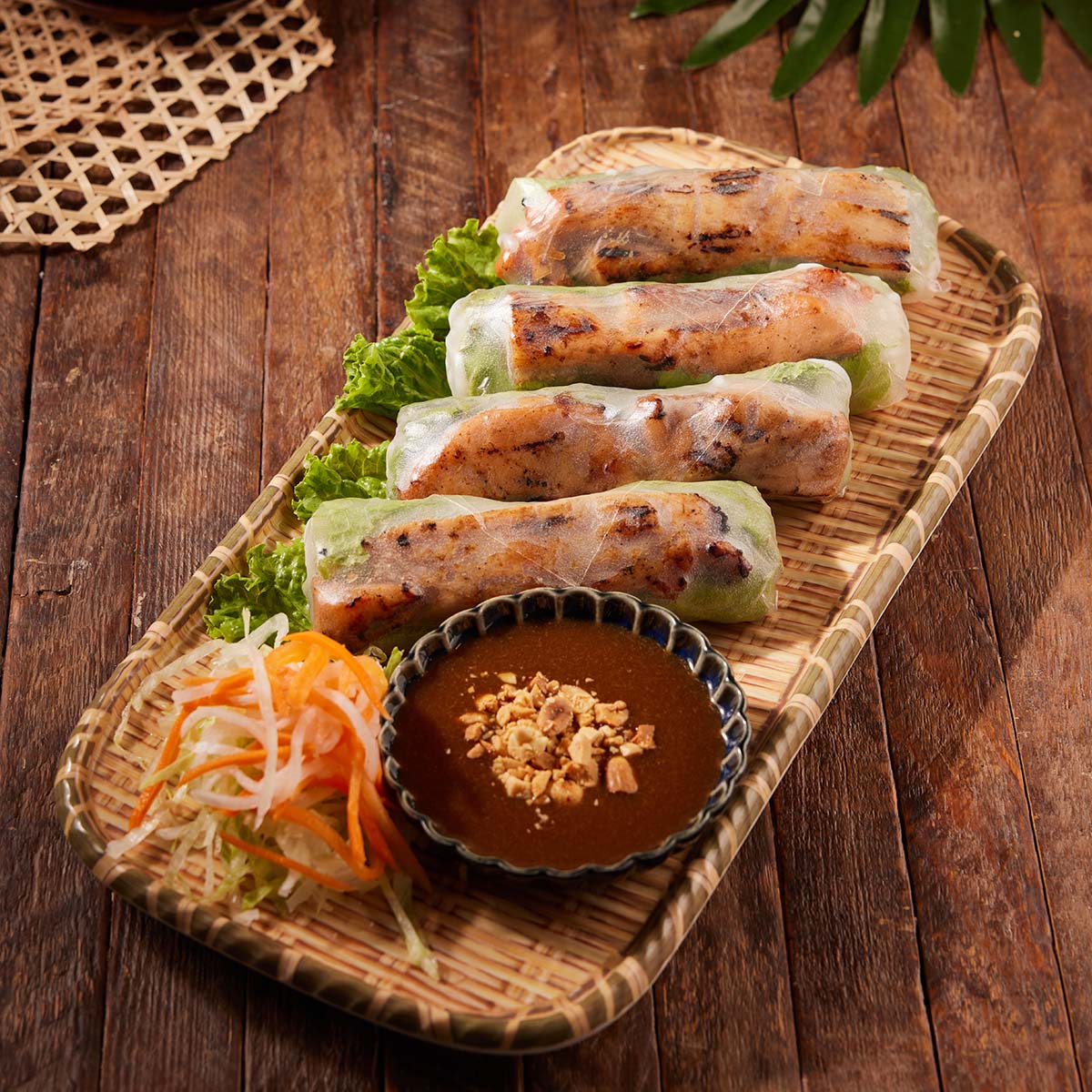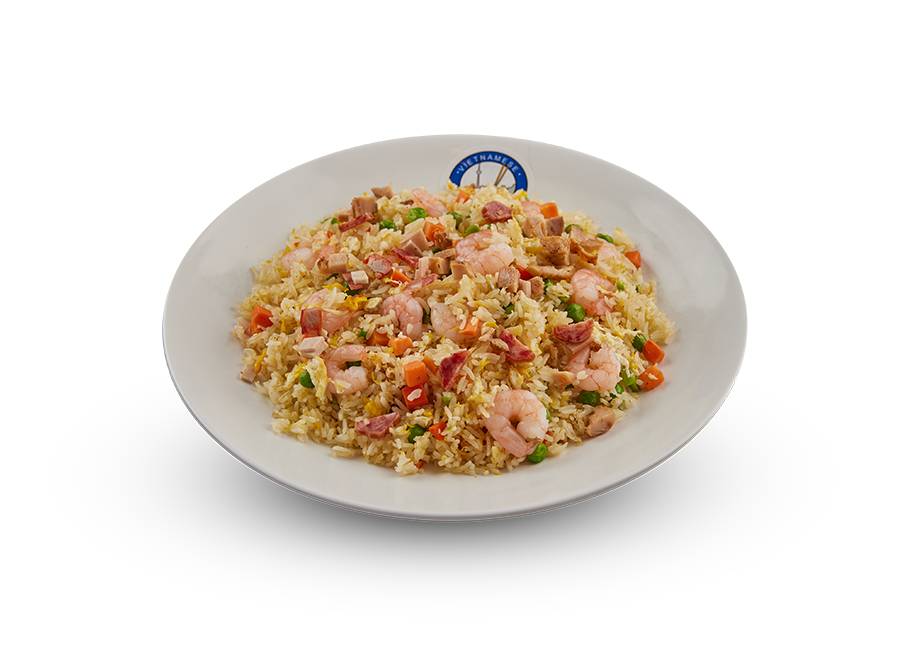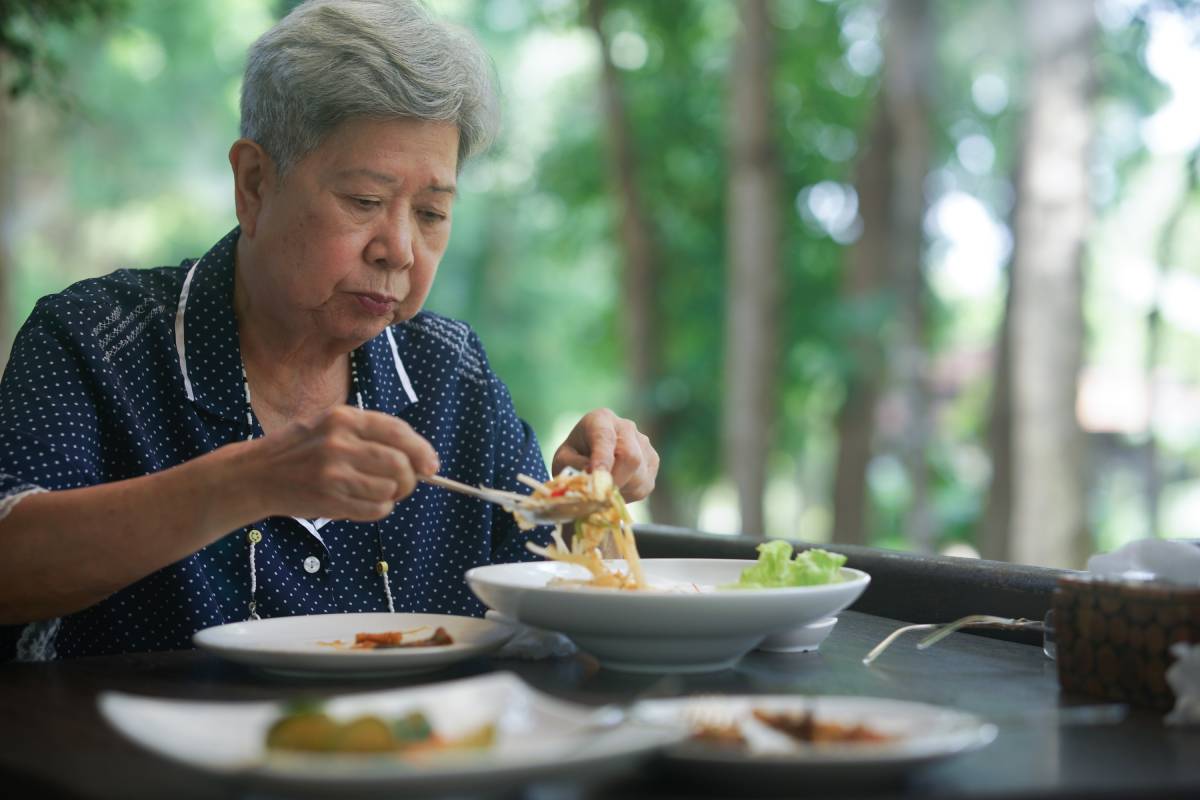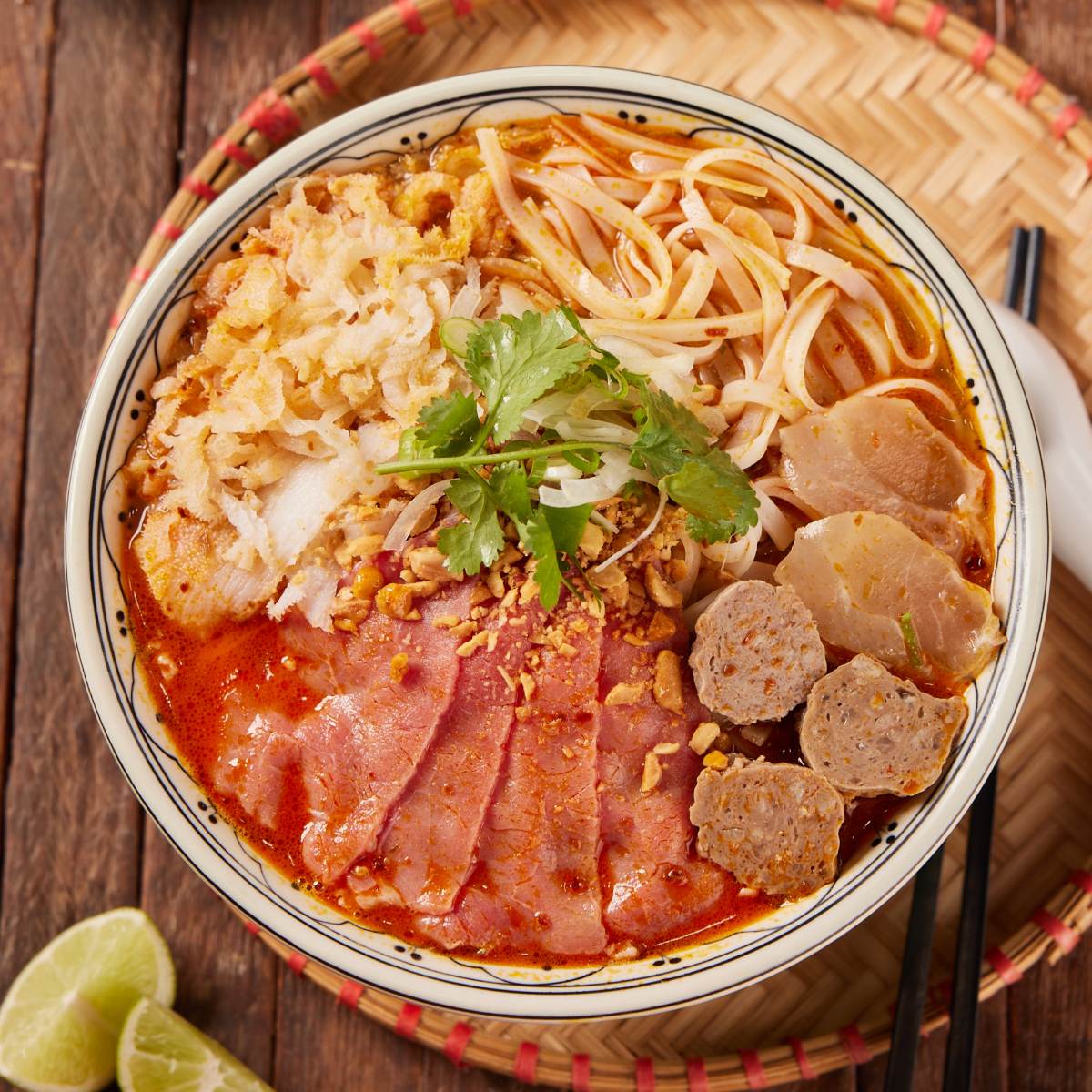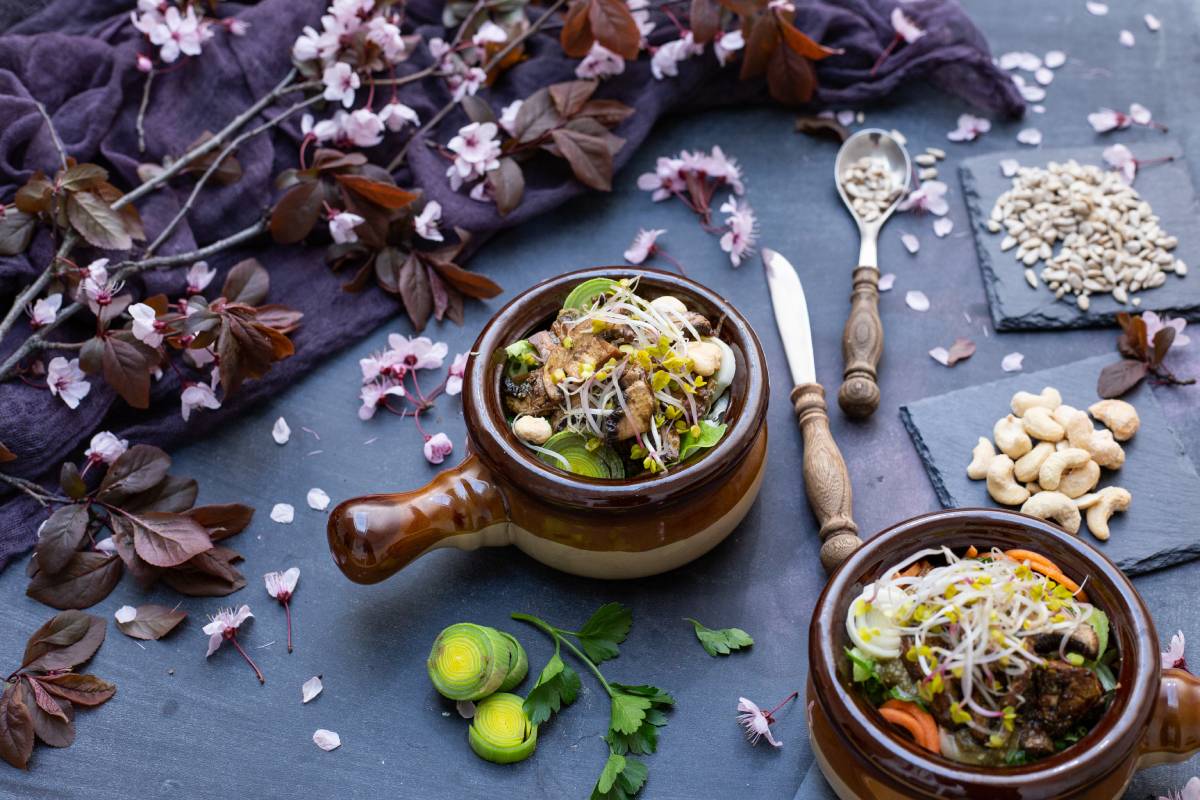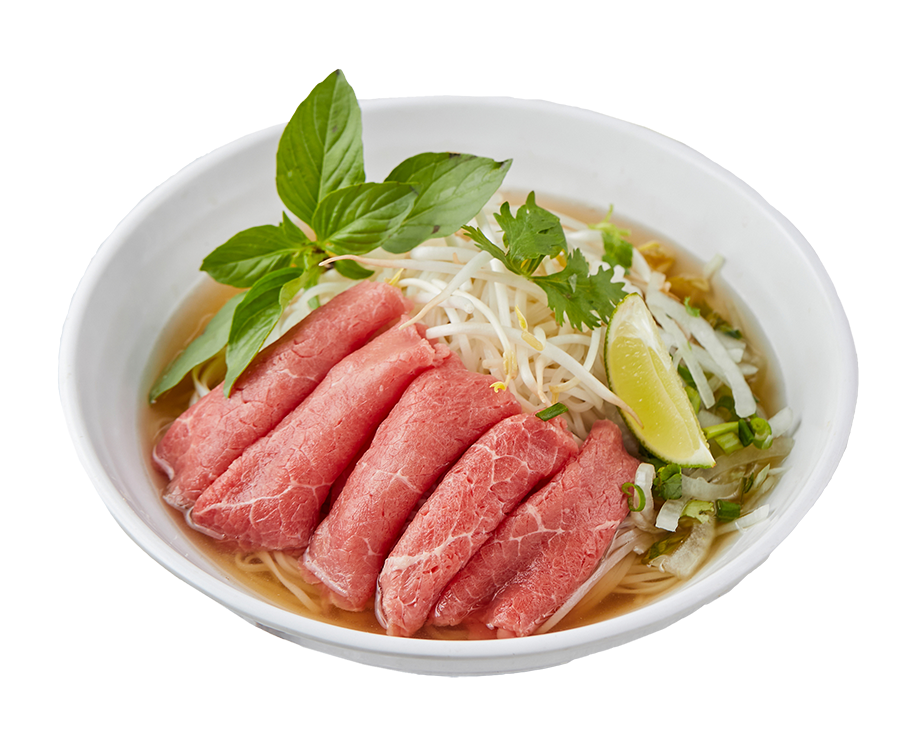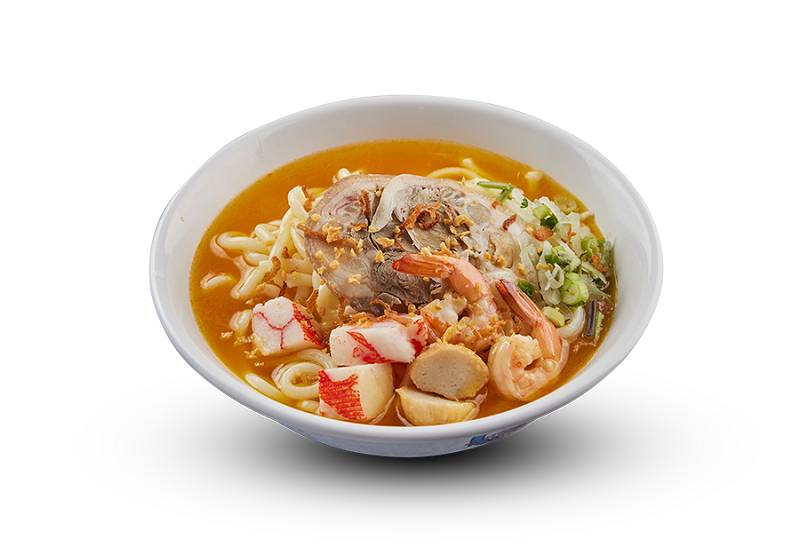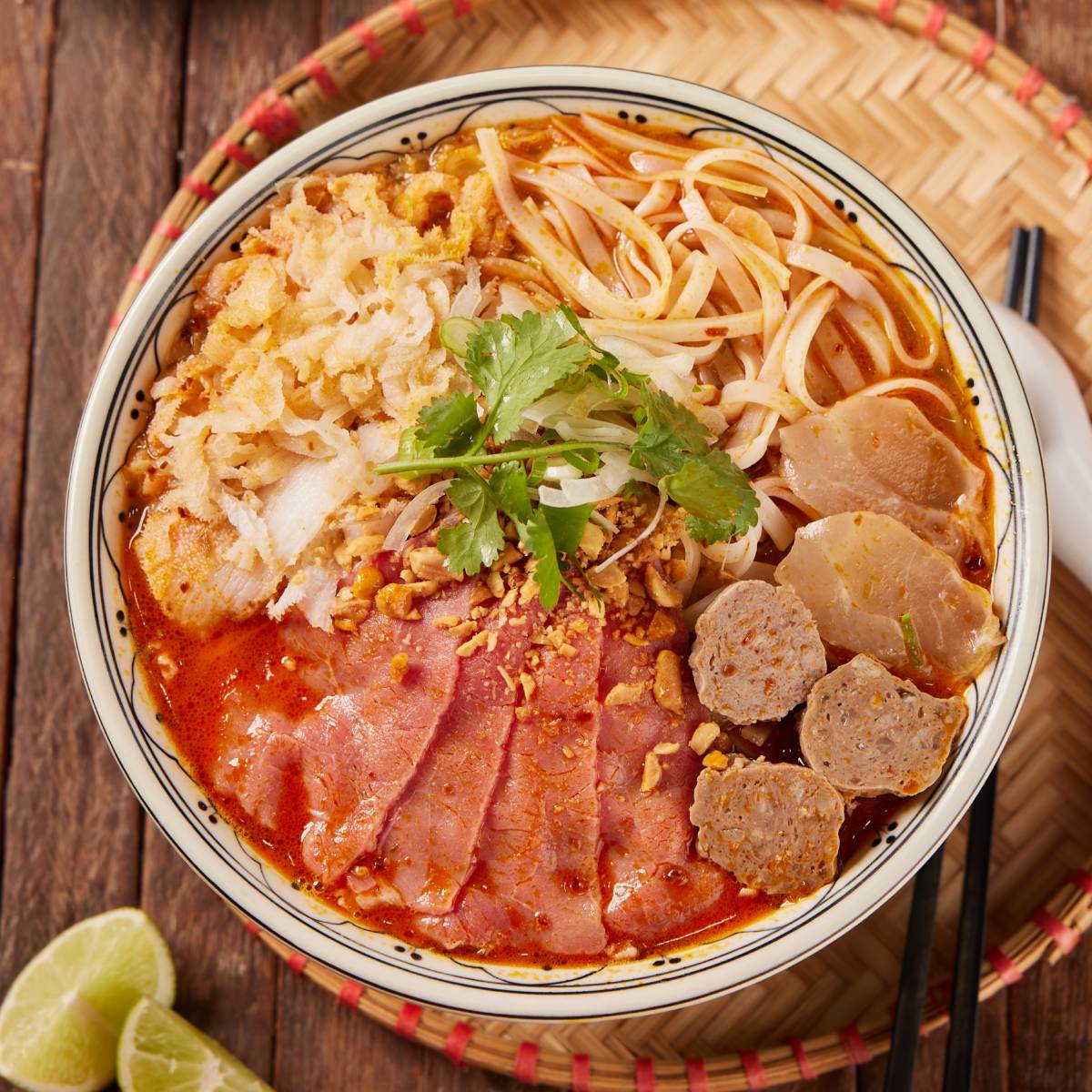An Overview of Shrimp Wonton Soup
Before diving into the step-by-step instructions, let’s first understand what makes Shrimp Wonton Soup unique. The dish primarily consists of three key components:
- Wontons: These are dumplings made from thin dough wrappers filled with shrimp, sometimes pork, or other ingredients. The filling is seasoned to create a savoury bite that complements the broth.
- Broth: The soup base, typically made from chicken, pork, or seafood stock, is clear and light but flavoured. It’s usually seasoned with soy sauce, fish sauce, and aromatics like ginger and garlic.
- Garnishes and Additions: To enhance the flavour and presentation, fresh herbs like cilantro, green onions, and vegetables like bok choy or spinach are often added to the soup.
Ingredients You’ll Need
For the Wontons:
- Shrimp: 200 grams, peeled, deveined, and chopped into small pieces.
- Ground Pork (optional): 100 grams to add richness and flavour to the filling.
- Wonton Wrappers: 30-40 pieces, usually available in the refrigerated section of Asian grocery stores.
- Garlic: 2 cloves, finely minced.
- Ginger: 1 teaspoon, finely grated.
- Soy Sauce: 1 tablespoon for seasoning.
- Sesame Oil: 1 teaspoon, adds a nutty flavour.
- Salt: 1/2 teaspoon.
- Pepper: 1/4 teaspoon for a slight kick.
- Cornstarch: 1 teaspoon helps bind the filling.
- Green Onions: 2 tablespoons, finely chopped.
For the Broth:
- Chicken or Pork Stock: 6 cups, homemade or store-bought.
- Ginger: 2 slices, adds warmth to the broth.
- Garlic: 2 cloves, crushed to release their flavour.
- Soy Sauce: 1 tablespoon for seasoning.
- Fish Sauce: 1 tablespoon adds depth to the broth.
- Salt: To taste, enhances the overall flavour.
- Sugar: 1 teaspoon balances the saltiness.
- White Pepper: 1/4 teaspoon for a hint of spice.
- Bok Choy or Spinach: A few handfuls for added nutrition and colour.
For Garnish:
- Green Onions: 2 tablespoons, chopped.
- Fresh Cilantro: A small handful, chopped.
- Crispy Fried Shallots: Optional for added texture and flavor.
Preparing the Wonton Filling
The wonton filling is the heart of this dish, providing the primary flavour and texture. Here’s how to prepare it:
- Chop the Shrimp: Start by chopping the shrimp into small pieces. You want the pieces to be small enough to mix well with the other ingredients but large enough to provide a satisfying bite.
- Mix the Filling: In a large bowl, combine the chopped shrimp, ground pork (if using), minced garlic, grated ginger, soy sauce, sesame oil, salt, pepper, cornstarch, and chopped green onions. Mix everything thoroughly until well combined. The cornstarch helps bind the mixture, making it easier to handle and giving the wontons a nice texture.
- Test the Filling: Before wrapping all the wontons, it’s a good idea to test the filling. Cook a small portion in a pan to check the seasoning. Adjust the salt, pepper, or soy sauce as needed.
Wrapping the Wontons
Wrapping wontons might seem challenging initially, but with some practice, you’ll get the hang of it. Here’s a simple method to follow:
- Prepare the Wonton Wrappers: Remove the wonton wrappers from their packaging and cover them with a damp cloth to prevent them from drying out.
- Place the Filling: Lay a wonton wrapper on a clean, dry surface. Spoon about a teaspoon of the shrimp filling into the center of the wrapper.
- Fold the Wrapper: Use your finger to moisten the edges of the wrapper with a little water. Fold the wrapper in half diagonally to form a triangle. Press the edges firmly to seal.
- Shape the Wonton: For a more traditional look, bring the two bottom corners of the triangle together, overlap them slightly, and press to seal. This creates a small “hat” shape.
- Repeat: Continue this process with the remaining wrappers and filling. Place the finished wontons on a tray lined with parchment paper to prevent sticking.
Making the Broth
A good broth is essential for a delicious Shrimp Wonton Soup. Here’s how to make a flavorful, aromatic broth:
- Please start with the Stock: Pour the chicken or pork stock into a large pot and bring it to a gentle boil.
- Add Aromatics: Add the ginger slices and crushed garlic to the pot. Let the broth simmer for about 10 minutes to allow the flavours to infuse.
- Season the Broth: Stir in the soy sauce, fish sauce, sugar, and white pepper. Taste the broth and adjust the seasoning with salt or more soy sauce. The broth should be savoury and balanced.
- Simmer: Lower the heat and let the broth simmer gently while you cook the wontons. This allows the flavours to meld together without boiling away the liquid.
Cooking the Wontons
Cooking the wontons is a straightforward process, but it’s essential to do it right to avoid overcooking or having them stick together:
- Boil Water: Bring a large pot of water to a boil. It’s best to cook the wontons in water rather than directly in the broth, as this keeps the broth clear and free from any excess starch from the wrappers.
- Cook the Wontons: Gently drop the wontons into the boiling water. Stir them lightly to prevent them from sticking to each other or the bottom of the pot. Cook for about 3-4 minutes or until they float to the surface, which indicates they’re done.
- Transfer to Broth: Use a slotted spoon to carefully transfer the cooked wontons from the water into the simmering broth.

Final Touches and Serving
Once the wontons are cooked and added to the broth, it’s time to finish the soup:
- Add Vegetables: Add the bok choy or spinach to the broth. Cook for a few minutes until the vegetables are tender but still bright green. This step adds colour, nutrition, and additional texture to the soup.
- Taste and Adjust: Before serving, taste the soup one final time. If needed, adjust the seasoning with additional salt, soy sauce, or pepper.
- Serve: Ladle the soup into individual bowls, ensuring each bowl gets a generous portion of broth, wontons, and vegetables.
- Garnish: Sprinkle the chopped green onions, cilantro, and crispy fried shallots on each bowl. These garnishes add freshness and a delightful crunch to the soup.
Tips for Perfect Shrimp Wonton Soup
To ensure your Shrimp Wonton Soup turns out perfectly every time, consider these tips:
- Use Fresh Ingredients: Fresh shrimp, herbs, and vegetables significantly improve the flavour and quality of the soup. If possible, avoid using frozen ingredients.
- Homemade Stock: If you have the time, making your chicken or pork stock will add incredible depth to the broth. Simmer bones with aromatics like garlic, ginger, and onions for several hours to create a rich, flavorful stock.
- Don’t Overstuff the Wontons: It can be tempting to add more filling, but overstuffed wontons are more likely to burst during cooking. Stick to about a teaspoon of filling per wrapper to avoid this issue.
- Freeze Extra Wontons: If you have leftover wontons, you can freeze them uncooked. Place them on a tray in the freezer until solid, then transfer them to a ziplock bag. When ready to use, cook them directly from frozen.
- Avoid Overcooking: Wontons cook quickly, so remove them from the boiling water when they float to the surface. Overcooking can cause them to become mushy and lose their delicate texture.
Variations and Customizations
While traditional Shrimp Wonton Soup is delicious on its own, there are several ways to customize the dish to suit your taste:
- Add Noodles: Add some cooked egg noodles to the soup for a more filling meal. Cook the noodles separately and place them in the bowls before ladling the soup over them.
- Spicy Version: If you enjoy a bit of heat, add some chilli oil, fresh sliced chillies, or a dash of hot sauce to the broth. This will give the soup a spicy kick that complements the savoury wontons.
- Alternative Fillings: While shrimp is the classic filling, you can experiment with other ingredients like minced chicken, mushrooms, or tofu for a vegetarian version. Just be sure to adjust the seasoning accordingly.
- Herb Variations: If you’re not a fan of cilantro, try using fresh basil or mint as a garnish. These herbs offer a different flavour profile that can change the overall taste of the soup.
Serving Suggestions
Shrimp Wonton Soup is a versatile dish that can be served in various ways depending on the occasion:
- As an Appetizer: Serve smaller portions of the soup as a light starter before a larger meal. This works well for multi-course dinners or when entertaining guests.
- Main Course: Pair the soup with a simple side salad or steamed vegetables for a satisfying meal. The soup is filling, especially if you add noodles or extra vegetables.
- With Side Dishes: Serve the soup alongside other Asian dishes like spring rolls, fried rice, or stir-fried vegetables. This creates a well-rounded, flavorful meal that’s sure to please.
Storing and Reheating Leftovers
If you have leftovers, Shrimp Wonton Soup can be stored and reheated with ease:
- Refrigerating: Store the soup in an airtight container for three days. Keep the wontons and broth separate to prevent the wontons from becoming too soft.
- Freezing: For extended storage, freeze the wontons separately from the broth. The broth can be frozen in an airtight container, while the wontons should be frozen individually on a tray before transferring them to a freezer bag. When ready to serve, thaw the broth and reheat it gently while cooking the wontons from frozen.
- Reheating: Gently heat the soup on the stovetop over medium heat. If the wontons and broth are stored separately, cook them in boiling water before adding them to the reheated broth.
Troubleshooting Common Issues
Even with the best intentions, things can sometimes go wrong in the kitchen. Here are some common issues you might encounter while making Shrimp Wonton Soup and how to fix them:
- Wontons Breaking Apart: If your wontons are falling apart during cooking, it could be due to overfilling or not sealing the edges properly. Press the edges firmly and use only a tiny amount of filling.
- Bland Broth: If the broth tastes boring, add more soy sauce, fish sauce, or salt. Sometimes, a small amount of sugar or an extra slice of ginger can also enhance the flavour.
- Cloudy Broth: To keep the broth clear, do not cook the wontons directly in it. Always cook them separately in boiling water and then transfer them to the broth.
- Wontons Sticking Together: To prevent wontons from sticking together during cooking, stir them gently as soon as they’re added to the boiling water. Ensure the water is at a rolling boil before adding the wontons.
The Cultural Significance of Wonton Soup
Wonton soup is unique in many Asian cultures, including Vietnamese cuisine. It’s often associated with comfort and warmth, making it a popular dish during colder months or when someone feels under the weather. Súp Hoành Thánh is commonly enjoyed as a breakfast dish in Vietnam, particularly in the southern regions. The simplicity of the dish, combined with its rich flavours, makes it a favourite among people of all ages.
Wontons are believed to have originated in China, where they have been enjoyed for centuries. Over time, they spread throughout Asia, with each culture adapting the dish to their tastes and traditions. In Vietnam, adding fresh herbs and using fish sauce in the broth are distinct features that set Vietnamese wonton soup apart from its Chinese counterpart.
To Sum Up
Preparing Shrimp Wonton Soup at home is a rewarding experience that allows you to enjoy a traditional Vietnamese dish in the comfort of your kitchen. Following this guide, you can create a delicious, aromatic soup to impress your family and friends. Remember, the key to a great wonton soup lies in the quality of your ingredients, the care you take in preparing the wontons, and the richness of your broth. With some practice, you can make this comforting dish a regular part of your culinary repertoire.
Here are some delicious food and drinks to try when ordering from PHO restaurants in Toronto:
House Special Beef Noodle Soup (Phở Đặc Biệt)
Deep Fried Spring Roll (Chả Giò)
VermicelIi Noodle in Tomato Soup (Bún Riêu)
Udon Noodle Soup with Shrimp (Bánh Canh Tôm)
Deep Fried Shrimp Wonton (Hoành Thánh Chiên)
Stir Fried Soft Egg Noodle with Seafood (Mì Xào Mềm Đồ Biển)


